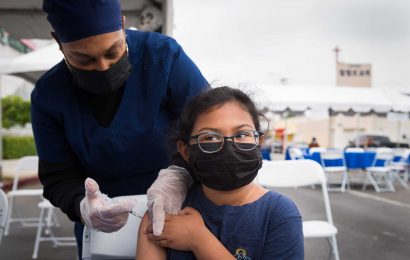In March 2023, four “medical tourists” from South Carolina who were seeking healthcare in Mexico were kidnapped by a drug cartel. Two were killed when they were trapped in a shootout. One of them was scheduled for tummy-tuck surgery, and others were seeking cheaper prescription drugs.

The news reached Bruce Hermann, MD, a plastic surgeon in Denton, Texas, who brought up the incident in a segment of his podcast, “Nip Talk,” in which he talked about the risks of medical tourism. But violence in foreign countries isn’t Hermann’s primary concern.
“Being the victim of a crime is lower down the risk strata,” Hermann told Medscape. “A bigger concern is the lack of regulations of doctors and facilities in countries like Mexico.”
The savings from medical tourism may be tempting, but the unpredictable clinical risks are daunting. Some employers pay for treatment at certain foreign clinics, and Blue Shield of California’s HMO plan, Access Baja, covers care in certain clinics in Mexico’s Baja peninsula. But US health insurance generally does not cover medical tourism.
Despite its popularity, medical tourism is not siphoning off a significant number of patients from US doctors, with the possible exception of plastic surgery. One study found that medical tourism accounts for less than 2% of US spending on noncosmetic healthcare.
Still, as many as 1.2 million Americans travel to Mexico each year seeking healthcare at lower costs, particularly dental care, bariatric surgery, and cosmetic procedures.
Physicians such as Hermann see the results when things go awry. Hermann said when he takes calls at a nearby level-II trauma center, he sees, on average, one patient a month with complications from plastic surgeries performed abroad.
Patients tell Hermann they often had little pre-op time with the surgeons, and some may not even see their surgeon. They have to fly back home just days after their procedures, so complications that typically arise later are missed, he said.
Who Opts for Medical Tourism?
There are few statistics on the number of medical tourists or the clinical problems they have. Josef Woodman, CEO of Patients Beyond Borders, a medical tourism consultancy in Chapel Hill, North Carolina, has developed a profile of medical tourism that is based on his close contacts within the industry.
Woodman said the vast majority of US medical tourists go to Mexico, which accounts for an estimated 1 million to 1.2 million medical visitors a year. He said Costa Rica is another popular destination, followed by other Latin American countries and some in the Far East, the Middle East, and Eastern Europe.
Woodman estimates that dental treatments make up 65% of all medical tourism. Cosmetic procedures come in a distant second, at 15%. Cosmetic procedures can be expensive and are rarely covered by insurance. They can be performed at half the price abroad, he said.
According to Woodman, other significant fields for medical tourism are orthopedics, which accounts for 5% of all visits, and bariatrics, with 3% to 5%. Hip and knee replacements are expensive, and in the case of bariatrics, US insurers often deny coverage, he said.
People also go abroad for fertility care and organ transplants, and one Jamaica company even offered dialysis vacations for US tourists.
On the other hand, medical tourism does not work well for cancer treatments, because cancer care involves long periods of treatment and cannot be completed in a trip or two, Woodman said. “The media also plays up major procedures like open heart surgery, but they are in fact very rare,” he added.
What Patients Are Looking For
Medical tourists typically pay 50% to 70% of what they would pay in the US for the same procedure, Woodman said. Prices are lower because patients pay in cash, foreign wages are lower, and expenses such as malpractice insurance are much lower.
“Many medical tourists don’t have a choice,” Woodman said. “They cannot afford the US price for the procedure, even if they have health insurance, because they often have a high deductible.” In one study, the majority of medical tourists to Mexico reported an income of $25,000 to $50,000 a year.
That same study also found that the average age of medical tourists was just under 65. These older patients often come for a vacation. “A sizeable number of medical tourists are looking for surgery plus a vacation, a tummy-tuck and a stay at an all-inclusive resort,” said Steven P. Davison, MD, DDS, a plastic surgeon in Washington, DC, who has written on the phenomenon.
Another large group of medical tourists are immigrants to the US who want surgery in their country of origin, such as Brazil or Iran, Davison said, perhaps because they feel more comfortable or have family members who can act as caregivers. He said some go to places that have expertise in a certain procedure.
“For instance, they get their hair transplantation done in Turkey because surgeons there have the expertise and it’s cheaper than in the United States,” Davison said.
Arranging the Trip
Patients often find foreign providers through online brokers who can arrange the flight, hotel, clinic, and physician. Brokers are not unbiased because they are usually paid by the clinic. Woodman said this arrangement works when the broker can offer a wide variety of options but not when the broker represents just a few clinics.
Woodman said patients could conceivably make their own arrangements without a broker, and some do so. “All the tools are on the internet,” he said. “However, many people don’t trust themselves to do this work.”
Even for patients who depend on brokers, Woodman advises verifying the quality of the clinic and its doctors before signing on. Most countries have online lists of registered doctors, and patients seeking healthcare can research complaints against a doctor.
There is no insurance that patients can have to guard against the risks of medical tourism, Woodman said. “When you could get it, it was prohibitively expensive,” he said. “You can get travel insurance, but that just covers peripheral problems, such as flight cancellations, accidental injury, and emergency care. It has nothing to do with problems stemming from planned procedures.
“Some clinics and hospitals serving medical tourists provide warranties on their work,” he added. “However, plastic surgery clinics are less likely to offer warranties, because patients are so frequently dissatisfied.”
How Things Can Go Wrong
Woodman said medical tourists may often receive substandard care when they select a provider who offers unusually large savings, such as 80% off the US price. “Those providers are likely cutting corners to get that kind of savings, and you should stay away from them,” he said.
Even when receiving care at an excellent clinic, patients can get infections if post-op requirements are not followed, according to Darrick E. Antell, MD, a plastic surgeon in New York City, who has treated medical tourists upon their return to the US.
Typically, patients are told to stay in their rooms for several days after the operation, but friends may push them to go out and have fun, he said. Sometimes patients choose exotic arrangements that place them at risk for infection. As an example, Antell mentioned a broker who offered a safari in combination with plastic surgery.
Hermann said tummy tucks are riskier because they involve large incisions, and many such patients are overweight, which impairs healing. “Tummy-tuck patients need a longer recovery, and they often have more discomfort than other plastic surgery,” he said.
When things go wrong, medical tourists have few legal protections. “They usually don’t go to an accredited facility, there is no credentialing of physicians, and their ability to sue is extremely limited,” Davison said. Patients would have to return to the foreign country and hire a lawyer there, and even then, it is harder to win a case and to receive an award as high as in the United States, he added.
Dealing With Follow-Ups
An inherent flaw with medical tourism, Antell said, is that patients typically go back home before post-op care is fully completed. “They may stay just a few days after surgery, and then fly back home,” he said.
“Patients who have complex operations abroad should stay for 8 to 10 days to have a proper follow-up,” he said. “But they fly back early, which can also lead to getting pulmonary embolisms on the flight.
“A checkup right after surgery doesn’t uncover many complications, because these tend to occur 7 to 12 days after surgery,” Hermann said.
“If they come to me within 3 months after surgery, I charge an upfront fee just to see them, because it takes an hour of my time,” Davison said. “Then I will take care of acute emergency, such as taking out an infected implant.”
Hermann said many patients wait too long to have their complications treated in the United States. “They may first try calling their doctor in Mexico, who tells them to take some antibiotics or something,” he said. “So when they finally do seek care, the infection is pretty far along.”
What US Doctors Can Do
Patients rarely tell their US doctors that they are planning a trip to a foreign country to undergo medical treatment, even though they have to request a copy of their medical records for the foreign doctor, Woodman said.
Hermann said only one of his patients told him she was planning to go aboard for plastic surgery. “She was a young mom, and I tried to talk her out of it,” he said. “I don’t know what happened because she didn’t come back.”
Hermann said doctors should assume that they won’t be able to change their patients’ minds, and they should try to help their patients make the best of it.
“They should insist on seeing the doctor ahead of time and make sure they get along with them,” he said. “Ask for credentialing of the doctor and the facility, and stay there several weeks post op. But they’re probably not going to do all of this.”
For more news, follow Medscape on Facebook, Twitter, Instagram, and YouTube.
Source: Read Full Article


